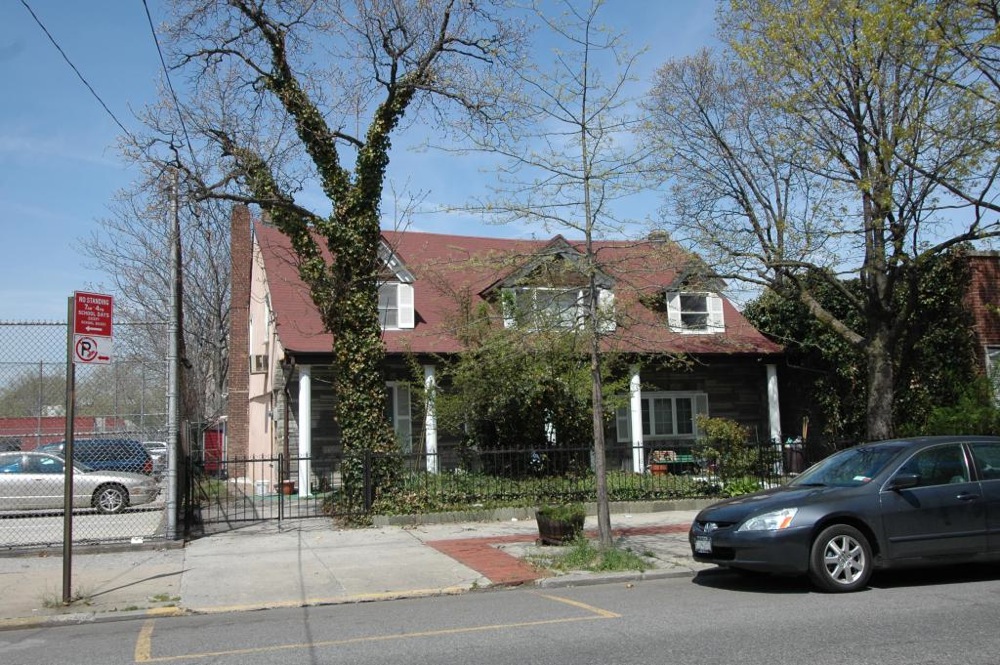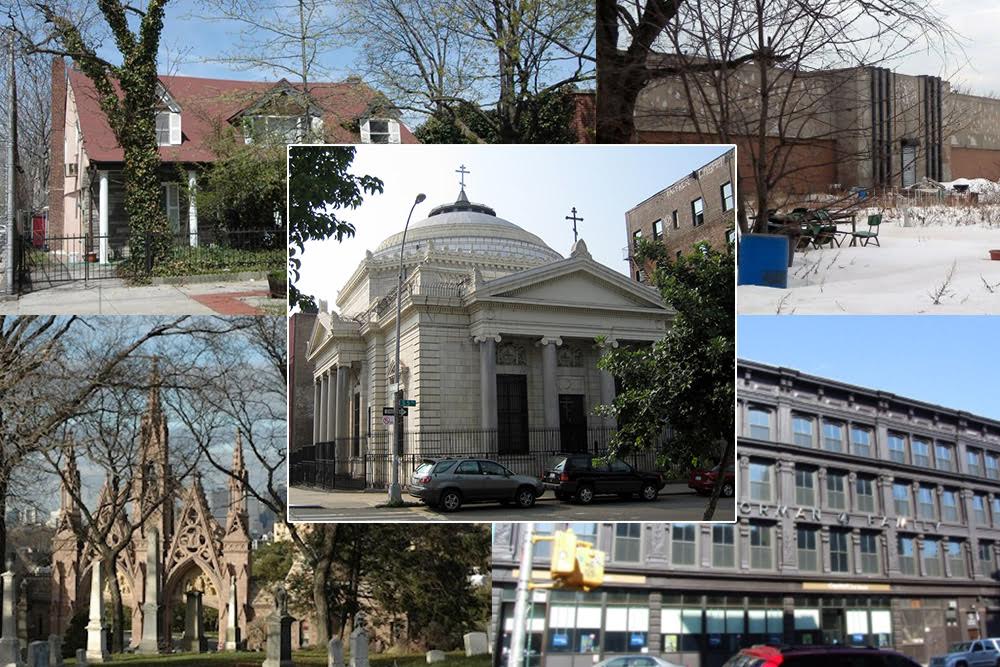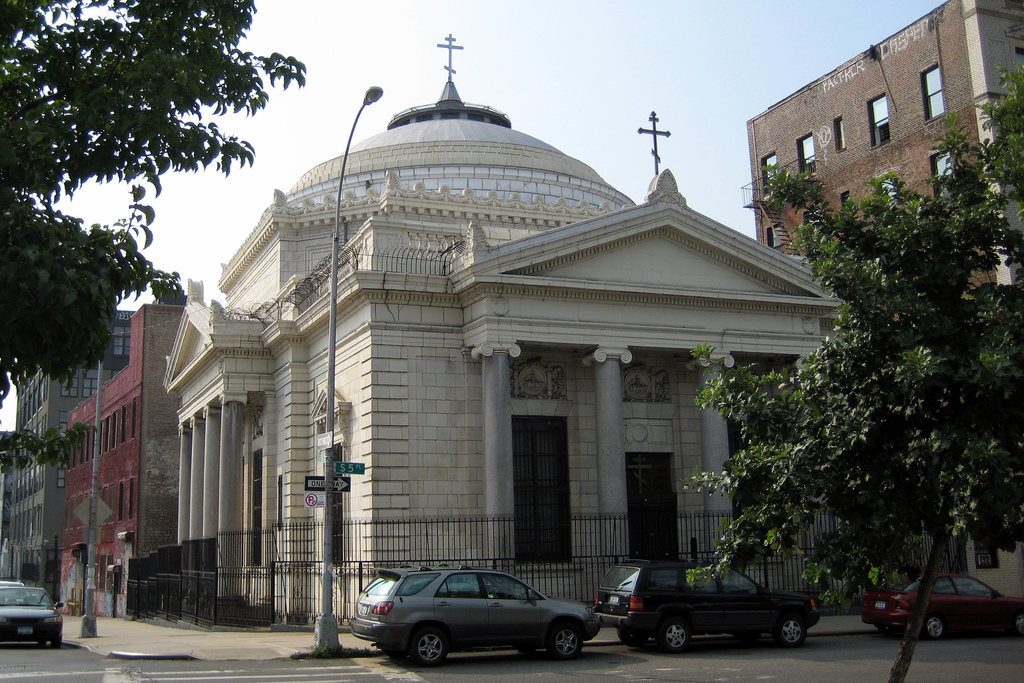Preservationists to LPC: Save the Lady Moody House and Coney Island Pumping Station!
The Lady Moody house in Gravesend. Photo by Kate Leonova for PropertyShark If the Landmarks Preservation Commission took a vote this minute on what to landmark based entirely on oral public testimony Thursday morning at the first of its unprecedented series of backlog hearings at its downtown Manhattan headquarters, the Coney Island Pumping Station would be designated and Green-Wood Cemetery…


The Lady Moody house in Gravesend. Photo by Kate Leonova for PropertyShark
If the Landmarks Preservation Commission took a vote this minute on what to landmark based entirely on oral public testimony Thursday morning at the first of its unprecedented series of backlog hearings at its downtown Manhattan headquarters, the Coney Island Pumping Station would be designated and Green-Wood Cemetery would not.
Less certain is the fate of the Lady Moody-Van Sicklen House house — arguably the most deserving of the seven proposed landmarks on the Brooklyn backlog because of its age, rarity and role in Brooklyn history. Possibly tipping the balance toward preservation was the testimony of the house’s previous owner, who lived there for 50 years: She has changed her opinion from oppose to support.
Discounting Green-wood, only two speakers out of some two or three dozen were there to speak against designating a proposed site. Both clergy, they testified against the landmarking of their churches.

Clockwise from top left: PropertyShark, Jim Henderson for Wikipedia, Suzanne Spellen, Green-Wood Cemetery, Wally Gobetz via Wikepedia Commons
A Who’s Who
Many of the assembled were a who’s who of preservation luminaries. The third to speak during the Brooklyn portion of the hearing, Otis Pearsall, was a key player in landmarking the city’s first historic district, Brooklyn Heights, in 1965, as a member of the Brooklyn Heights Association. He also helped broker the agreement with Brooklyn Bridge Park to restrict the height of Pierhouse to not interrupt the view of the Brooklyn Bridge from the Brooklyn Heights Promenade.
Most of the hushed hearing room on the 9th floor is dominated by a conference table for the members of the commission, with only a few rows of seats for the public. Presumably the commission does not frequently attract overflow crowds — this hearing missed being one by only a seat or two.
Memorable Testimony
“I am here in a definite first to oppose designation” of Green-Wood, said Pearsall. At least a dozen speakers said they oppose designating all of Green-Wood because it is impractical, but some spoke in favor of designating individual landmarks owned by the cemetery.
The Lady Moody house and the Coney Island Pumping Station garnered the most support.
“The Lady Moody house is one of the most significant historic structures in Brooklyn,” said City Council Member Mark Treyger, who spoke in favor of designating both.
Despite 20th century alterations, the Lady Moody house has never been moved from its site and contains much original material, including portions of the cellar walls that date from an earlier house constructed in the 1600s.
Other elements original to the 1700s house include heavy oak beams, two fireplaces, narrow stairs, and some of the floors, according to the New York Landmarks Conservancy’s Andrea Goldwyn, Historic Districts Council’s Simeon Bankoff, and the house’s previous owner, Vivian Solmo, who all spoke in favor of its designation.
Tunnels below the home connected to a now-demolished house on the site of the Gravesend cemetery and protected the community during the Indian wars of 1646 to 1645, according to Gravesend Historical Society President Eric Ierardi.
“Now I understand the house should have been landmarked a long time ago,” Solmo testified. “So please do your best to landmark the Lady Moody house,” she said to the commissioners.
A “Charming” Art Deco Building
The Coney Island Pumping Station brought out dozens of supporters, including many Art Deco enthusiasts. The Art Moderne structure was built in 1937 to provide water to fight fires on Coney Island and is the only municipal building designed by architect Irwin Chanin, who is well known for his Broadway theaters and Art Deco skyscrapers.
It’s also the easiest to landmark, since it is owned by the city. Numerous speakers said it should be preserved and turned into a community arts and environmental center. One speaker called it “charming.”
One of the most interesting perspectives on landmarking was provided by a tour guide. “It’s nice to say there’s a cast iron building in Brooklyn,” when tour goers alight in the borough, he said, referring to the Forman building at 183 Broadway in Williamsburg. “People expect signs of changes. And there are enough of those.”
The 1882 shoe factory and warehouse has unique cast-iron calla lilly details in the Neo-Grec style. As for the Lady Moody house in Gravesend, he continued:
“A 1640s, 1650s house is something great to see and show. Most of the things we say they [tour goers] forget, but when they see it, they remember it. They come to the city for it. They tell their friends about it. They take photos of it. They hashtag it.”
Inside the Lady Moody House
The initials of Thomas Hicks are carved into an original beam in the living room of the Lady Moody house, Solmo told Brownstoner after the hearing. The living room and a bedroom have original beams and fireplaces.
Both mantels are made of wood, and the fire boxes are deep enough to have kettles in them, she said. There are also old floors in the upstairs rooms.
“We covered the beams with new wood,” she said. “They had dents and initials in them. That’s the beauty of it. But 50 years ago we didn’t know.”
Solmo opposed landmarking the house at an earlier hearing because she didn’t understand the landmarking process and her husband had just passed away.
“It’s a wonderful house. I lived there for 50 years. Lady Moody brought us nothing but good luck,” she said.
Landmarking the Lady Moody house is urgent, testified book author and blogger Joseph Ditta of the Gravesend Gazette. The commissioners did not vote Thursday, and will decide which sites to remove, designate or prioritize for designation by the end of 2016.
“It’s worth noting that the Lady Moody Van Sicklen House is currently for sale, and without your protection, it is doomed,” Ditta told the commissioners.

Map by LPC

Holy Trinity Cathedral/Ukranian Church in Exile in Williamsburg. Photo by Wally Gobetz via Flickr

Cast-iron details on the Forman Building, above and below. Photos by Suzanne Spellen

Related Stories:
Brooklyn Sites the LPC Has Targeted to Dump
For Less Than $1 Million, You Can Own a Famous 18th-Century Brooklyn Farmhouse
Breaking: Landmarks to “Decalendar” Hundreds of Proposed Historic Sites?









What's Your Take? Leave a Comment